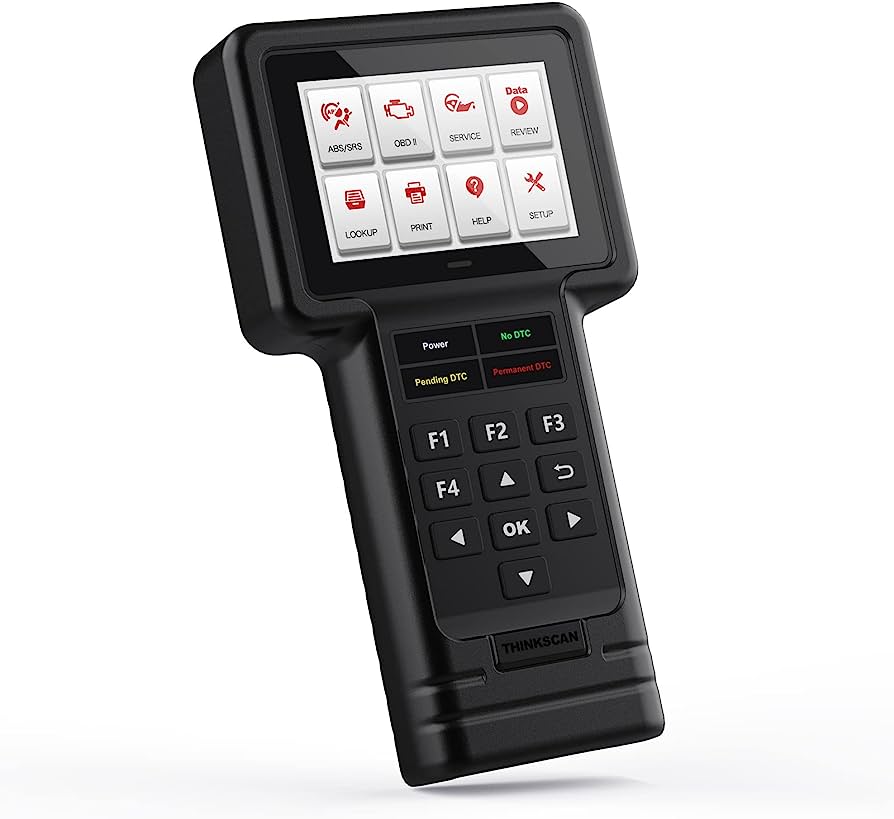To get a bmw out of limp mode, you need to address the underlying issue causing the limp mode activation. Limp mode is a safety feature that restricts the vehicle’s performance to prevent further damage.
Ensure that the vehicle is in a safe location before proceeding with troubleshooting. Vehicle malfunctions can be frustrating, especially when they result in the activation of limp mode. Limp mode is a safeguard mechanism that restricts the performance of your bmw to prevent further damage.
It is often triggered by various issues, such as an engine or transmission problem. When your bmw enters limp mode, it becomes crucial to identify and address the underlying cause to restore your vehicle’s normal performance. This article will provide you with practical tips and guidance on how to get a bmw out of limp mode and get back on the road. By following these steps, you can troubleshoot the issue and potentially resolve it without the need for professional assistance.

Credit: www.motorcyclenews.com
Understanding Limp Mode And Its Causes
Limp mode, also known as “limp-home mode” or “safe mode,” is a feature in bmw vehicles that activates when the car’s computer detects a potential issue. It is designed to protect the engine and other vital components from damage by restricting the vehicle’s performance.
While it can be frustrating to experience, limp mode serves an important purpose in preventing further damage and avoiding costly repairs.
What Is Limp Mode And Why Does It Happen?
- Limp mode is an engine protection feature that reduces power and vehicle speed to prevent further damage to the engine and transmission.
- It is typically triggered by a fault or abnormal condition that the car’s computer detects.
- The exact parameters for activating limp mode can vary depending on the bmw model and the severity of the issue.
Common Causes Of Limp Mode In Bmw Vehicles
Faulty sensors and electronic components:
- Malfunctioning sensors, such as those monitoring the engine temperature, throttle position, or oxygen levels, can trigger limp mode.
- Issues with the electronic control module (ecm) or other electronic components can also lead to the activation of limp mode.
Low fluid levels or leaks:
- Insufficient levels of transmission fluid, engine oil, or coolant can cause the engine to overheat or not function properly, triggering limp mode.
- Leaks in the respective systems can also result in low fluid levels and subsequently activate limp mode.
Overheating issues:
- Engine overheating is another common cause of limp mode activation.
- Overheating can be caused by a faulty cooling system, a malfunctioning thermostat, or a malfunction in the engine’s temperature sensors.
Recognizing the symptoms of limp mode:
It’s essential to be able to recognize the signs of limp mode so that you can address the underlying issues promptly. Here are some common symptoms to watch out for:
- Drastic reduction in engine power and acceleration.
- Limited top speed, usually capped at around 40 mph.
- Increased fuel consumption.
- Illumination of warning lights on the dashboard, such as the check engine light or transmission warning.
Being aware of these symptoms will help you identify when your bmw has entered limp mode and take appropriate action to diagnose and resolve the underlying problem. Remember that limp mode is a safety feature that activates to protect your vehicle, so it’s crucial to address the issue promptly rather than continuing to operate the vehicle in limp mode.
Troubleshooting And Resolving Limp Mode Issues
Is your bmw stuck in limp mode, leaving you frustrated and unsure of how to fix it? Don’t worry, we’ve got you covered. In this guide, we’ll walk you through the step-by-step process of diagnosing and resolving limp mode issues in your bmw.
Let’s get started!
Step-By-Step Guide To Diagnosing Limp Mode In Your Bmw
When your bmw goes into limp mode, it’s important to understand what’s causing the issue so you can address it properly. Follow these steps to diagnose the problem:
- Checking for error codes using an obd-ii scanner:
- Connect an obd-ii scanner to your bmw’s diagnostic port.
- Scan for error codes to identify any issues with the engine, transmission, or other components.
- Note down the error codes for further investigation.
- Inspecting and testing sensors and electronic components:
- Inspect all sensors and electronic components related to the error codes.
- Check for loose connections, damaged wires, or faulty components.
- Test the sensors and components using a multimeter or other appropriate tools.
- Replace or repair any faulty parts as necessary.
- Examining fluid levels and addressing leaks:
- Check the fluid levels in your bmw, including engine oil, transmission fluid, and coolant.
- Ensure that all fluids are at the correct levels and in good condition.
- Inspect for any leaks and repair them promptly.
- Addressing overheating issues:
- Monitor the temperature gauge in your bmw.
- If the engine is overheating, check the coolant level and radiator for any blockages.
- Clean or replace the radiator as needed.
- Ensure that the cooling system is functioning properly.
How To Reset Limp Mode And Get Your Bmw Back On Track
After diagnosing and fixing the underlying issues causing your bmw to go into limp mode, it’s time to reset the system and get back on the road. Here’s how:
- Clearing error codes and resetting the computer:
- Use an obd-ii scanner to clear the error codes from your bmw’s computer system.
- This will reset the limp mode and allow your bmw to operate normally again.
- Performing a soft reset by disconnecting the battery:
- Turn off your bmw’s ignition and disconnect the negative terminal of the battery.
- Leave it disconnected for about 15 minutes to allow the computer system to reset.
- Reconnect the battery and start your bmw to see if the limp mode issue is resolved.
- Seeking professional help if diy solutions don’t work:
- If you’ve followed all the troubleshooting steps and your bmw is still stuck in limp mode, it’s time to seek professional assistance.
- Take your bmw to a qualified mechanic or dealership for further diagnosis and repair.
By following these troubleshooting and resetting steps, you’ll be able to diagnose and resolve limp mode issues in your bmw. Remember, if diy solutions don’t work, don’t hesitate to reach out to a professional for help.
Preventive Measures And Maintenance Tips
Tips For Preventing Limp Mode In Your Bmw
When it comes to keeping your bmw running smoothly and avoiding the dreaded limp mode, preventive measures and regular maintenance play a crucial role. By taking the necessary steps to address potential issues before they escalate, you can ensure that your bmw operates at its optimal level.
Here are some helpful tips to prevent your bmw from ending up in limp mode.
Regular Maintenance And Servicing
One of the most important aspects of preventing limp mode is adhering to a routine maintenance schedule. Regular servicing allows for early detection of potential problems and ensures that your bmw receives essential care. Here’s what you need to keep in mind:
- Follow the manufacturer’s recommended service intervals and schedule regular check-ups with a qualified mechanic.
- Conduct inspections of belts, hoses, filters, and other crucial components to identify any signs of wear and tear.
- Ensure that electrical connections are clean and secure to prevent potential malfunctions.
Keeping Fluid Levels In Check
Proper fluid levels are vital for the smooth operation of your bmw’s various systems. Make sure to regularly monitor and maintain the fluids your vehicle requires:
- Regularly check and replenish engine coolant, transmission fluid, power steering fluid, and brake fluid to prevent any system failures.
- Keep an eye on your oil levels and change it as recommended to ensure proper lubrication and prevent engine damage.
Avoiding Aggressive Driving Habits
Though it may be tempting to push your bmw to its limits, aggressive driving can lead to excessive strain and potential limp mode. Here’s what you should consider:
- Avoid sudden acceleration or braking, as this can put unnecessary stress on your engine and transmission.
- Steer clear of excessive idling, as it can cause your engine to overheat and trigger limp mode.
- Maintain a safe and reasonable driving speed, especially when your engine is not yet warmed up.
Essential Maintenance Tips To Keep Your Bmw Running Smoothly
Apart from the general maintenance practices mentioned above, here are some specific measures you should take to keep your bmw in top shape:
- Regular oil changes and engine inspections: Clean oil ensures proper lubrication and protects against engine damage, while inspections allow for early detection of potential issues.
- Checking and replacing faulty sensors and components: Faulty sensors can trigger limp mode, so it’s crucial to identify and replace them promptly.
- Keeping the cooling system in optimal condition: Regularly inspect the radiator, coolant, and hoses to prevent overheating.
- Maintaining proper transmission and gear functions: Regularly check the transmission fluid level and condition, and address any shifting issues promptly.
By following these preventive measures and maintenance tips, you can reduce the risk of your bmw entering limp mode. Remember, regular care and attention can go a long way in ensuring a smooth and enjoyable driving experience with your bmw.
Frequently Asked Questions Of How To Get Bmw Out Of Limp Mode
How Does A Bmw Go Into Limp Mode?
When certain engine or transmission issues are detected, bmw cars may go into limp mode to protect the vehicle and prevent further damage.
What Are The Symptoms Of A Bmw In Limp Mode?
Symptoms of a bmw in limp mode can include reduced power, limited rpms, problems with acceleration, and a illuminated “engine malfunction” warning light.
How Do I Fix My Bmw When It’s In Limp Mode?
To fix a bmw in limp mode, you can try some basic troubleshooting like checking the transmission fluid level, resetting the ecu, or having a diagnostic scan performed by a licensed mechanic.
Can You Drive A Bmw In Limp Mode?
Yes, you can drive a bmw in limp mode, but it’s important to do so cautiously and only for a short distance as the vehicle will be operating at reduced power and performance.
Does Limp Mode Damage The Bmw Engine?
Limp mode itself does not damage the bmw engine, but it’s an indication that there is an underlying issue that needs to be addressed to prevent potential damage to the engine or transmission.
Conclusion
Getting your bmw out of limp mode can be a frustrating experience, but with the right knowledge and steps, it is definitely achievable. By understanding the possible causes of limp mode, such as sensor issues or a faulty transmission, you can take proactive measures to fix the problem.
Start by checking and cleaning the throttle body and sensors, as they play a crucial role in the functioning of your bmw. Additionally, inspect the transmission fluid level and condition, and consider flushing and replacing it if necessary. Another important step is to ensure that your vehicle’s electrical system is functioning properly.
In some cases, a software update or reset may be required to resolve the limp mode issue. Remember to always consult a professional if you are unsure or uncomfortable performing any of these steps. By following these guidelines and remaining vigilant, you can successfully get your bmw out of limp mode and enjoy a smoother driving experience once again.


